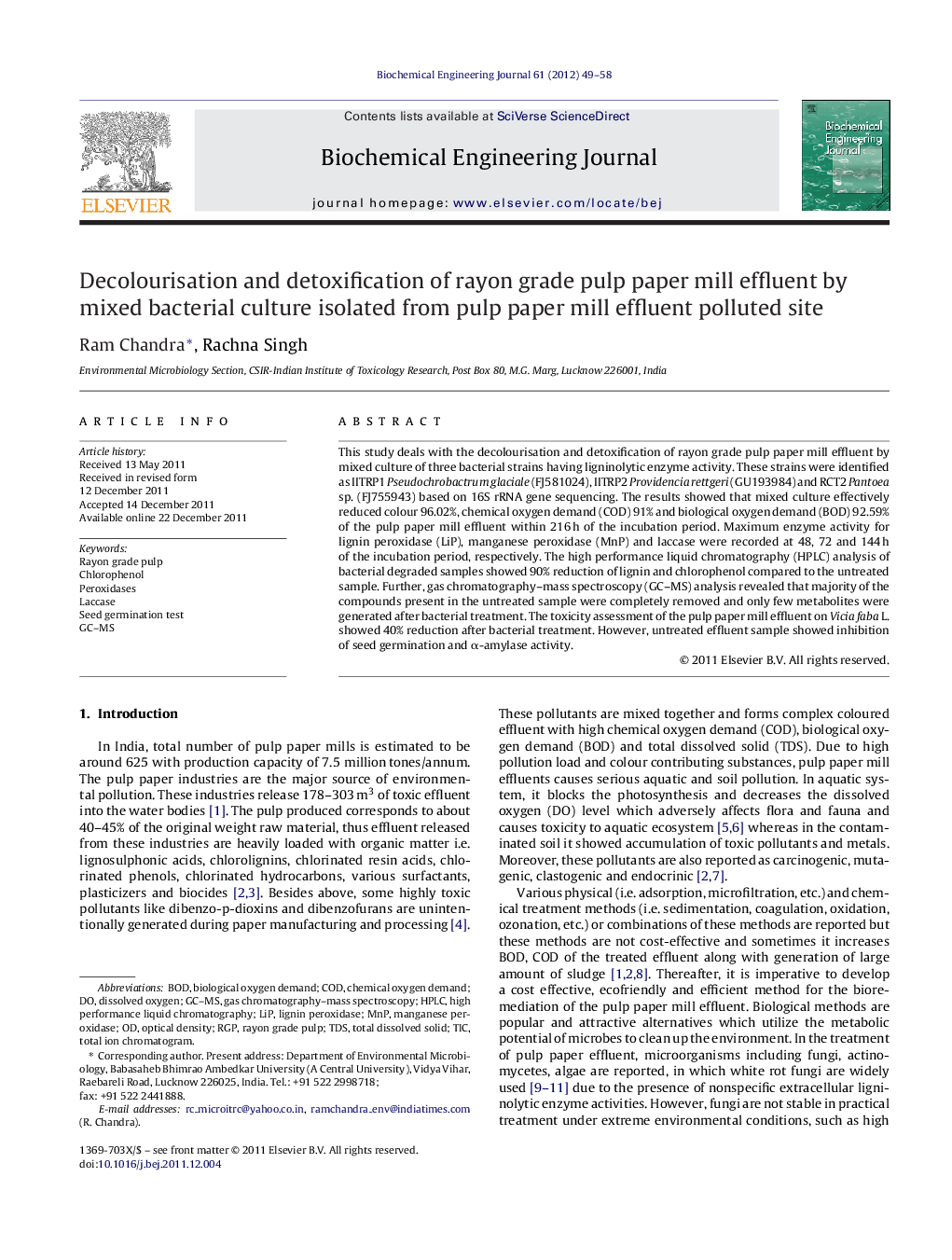| کد مقاله | کد نشریه | سال انتشار | مقاله انگلیسی | نسخه تمام متن |
|---|---|---|---|---|
| 3582 | 176 | 2012 | 10 صفحه PDF | دانلود رایگان |

This study deals with the decolourisation and detoxification of rayon grade pulp paper mill effluent by mixed culture of three bacterial strains having ligninolytic enzyme activity. These strains were identified as IITRP1 Pseudochrobactrum glaciale (FJ581024), IITRP2 Providencia rettgeri (GU193984) and RCT2 Pantoea sp. (FJ755943) based on 16S rRNA gene sequencing. The results showed that mixed culture effectively reduced colour 96.02%, chemical oxygen demand (COD) 91% and biological oxygen demand (BOD) 92.59% of the pulp paper mill effluent within 216 h of the incubation period. Maximum enzyme activity for lignin peroxidase (LiP), manganese peroxidase (MnP) and laccase were recorded at 48, 72 and 144 h of the incubation period, respectively. The high performance liquid chromatography (HPLC) analysis of bacterial degraded samples showed 90% reduction of lignin and chlorophenol compared to the untreated sample. Further, gas chromatography–mass spectroscopy (GC–MS) analysis revealed that majority of the compounds present in the untreated sample were completely removed and only few metabolites were generated after bacterial treatment. The toxicity assessment of the pulp paper mill effluent on Vicia faba L. showed 40% reduction after bacterial treatment. However, untreated effluent sample showed inhibition of seed germination and α-amylase activity.
Figure optionsDownload as PowerPoint slideHighlights
► This manuscript described bacterial consortium with three bacteria showing potential ligninolytic activity.
► The consortium capable for decolourisation & detoxification of rayon grade pulp paper mill effluent at high pollution load.
► The metabolic products during detoxification is also reported which is new information.
► This information will be useful to understand the mechanism of bacterial detoxification of pulp paper mill effluent.
► The developed consortium would be useful in various biotechnological applications.
Journal: Biochemical Engineering Journal - Volume 61, 15 February 2012, Pages 49–58